Chris Baty's Blog, page 47
November 11, 2020
30 Covers, 30 Days 2020: Day 11

Here is a cover designed by Jane Dorn based on the Thriller/Suspense novel Cloaked With Shadows by YWP participant Johanna A! I just love this synopsis.
Cloaked With Shadows
Taylor Harding realizes that nightmares really can happen.
When her parents announce that they are going to Alaska for Christmas vacation, all of her plans just float out the window.
But once they get stuck in a small, sleepy town Taylor gets involved in a murder mystery and ends up going to rescue the victim before she or he gets killed.
Throw in some Alaskan charm and a gorgeous Aurora Borealis and you’ve got yourself a novel.
Johanna A. is a fourteen-year-old writer from sunny, south Georgia. Who always is starting new novels but never finishes them. Maybe one day. She loves photography, art, exploring, hiking, and talking walks with her dog, Rufus. Adventure, Mystery, and anything to do with horses is what she loves to write about.
Born, raised, and bent double as a hairpin in various versions of Small-Town Baptist USA, Jane Dorn is a curious human resource who spends her time designing, wondering, and rambling around the southeast with her camera firmly in tow.
A few of her beliefs:
It is always open season on ideas. Hunt them tirelessly.Curiosity is the currency of creativity. There is a sea of difference between looking and seeing.November 10, 2020
Pro Tips from a NaNo Coach: It’s Never Too Late

NaNoWriMo can seem like a daunting task sometimes, for NaNo newbies and veterans alike. Fortunately, our NaNo Coaches are here to help guide you through November! Today, author Roseanne A. Brown is here to share some advice on getting started and catching up:
Stop me if this feels familiar:
November 1st: It’s the first day of NaNoWriMo and you are PUMPED! Your playlists are playing! Your aesthetics are inspiring! By noon, you’ve hit that magic number—1667—and by the afternoon, you’re several hundred words past it! This! Is! Your! Year!
November 2nd: Okay, not as many words as yesterday, but you’re still on track, and you’re still feeling good! You’ve got this!
November 5th: You really, really want to write today but the dog needs a walk/the spouse needs a ride to the airport/that assignment needs finishing/life is life-ing all over the place. Surely one day not writing won’t throw you off that much…
November 11th/13th/mid-month-day-of-your-choice: ……Uh Oh.
If you’re anything like me, more often than not your attempts to do NaNoWriMo look uncomfortably like the above. You begin the month with a flare of creativity and gusto, only to find yourself sitting on the ground two weeks later, sobbing into a bag of Doritos wondering where it all went wrong. Especially in 2020, when the first week of November felt like a clown car taped to a flaming carousel careening down a highway at 90 mph.
It’s so easy to get caught up in the idea that because we missed a day or five of NaNo, there’s no point in continuing. Ah well, gave it the ol’ college try, better luck next year. But when I find myself in the mid-month slump, I always remember this quote by G.K Chesterton:
“Anything worth doing is worth doing badly.”
Yes, 50,000 words is the goal. But if the act of writing itself is worth anything at all—and it is, from the bottom of my heart, it is—then anything that gets you closer to that goal is worth something too. Even if all you can scrape together is 1000 words. 500 words. 100. 10.
Because at the end of the day, writing a book isn’t about pushing out the absolute most words you possibly can every single moment of every single day. (If it is, then I have been doing this all wrong for years…) It’s about moving forward one page, one paragraph, one word at a time. And though we’d all love to have all the time in the world to write, life is full of so many other wonderful and frustrating and surprising and lovely things demanding our time. Not only that, we are living through a time of major upheaval, with the climate crisis, fascism, and systemic racism on the rise on a global level. To write anything at all under these conditions, especially as a marginalized writer, is itself an act of triumph. It’s saying that your existence and what you have to say means something in the face of others claiming it doesn’t.
So you fell off the horse. Great. That means you were going somewhere to begin with. Tend to your wounds, get back on, and keep moving. The only way you won’t get there is if you stop.
Roseanne “Rosie” A. Brown was born in Kumasi, Ghana and immigrated to the wild jungles of central Maryland as a child. She graduated from the University of Maryland with a Bachelor’s in Journalism and was also a teaching assistant for the school’s Jiménez-Porter Writers’ House program. Her journalistic work has been featured by Voice of America among other outlets.
On the publishing side of things, she has worked as an editorial intern at Entangled Publishing. Rosie was a 2017 Pitch Wars mentee and 2018 Pitch Wars mentor. Rosie currently lives outside Washington D.C., where in her free time she can usually be found wandering the woods, making memes, or thinking about Star Wars. Rosie is represented by Quressa Robinson of Nelson Literary Agency.
Get in touch with Roseanne this week on the NaNoWriMo Twitter account!
30 Covers, 30 Days 2020: Day 10
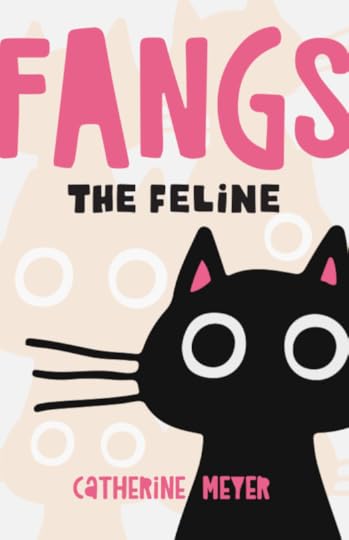
Our adorable cover is brought to you by Holly Aguilar and inspired by the Children’s Fiction novel Fangs the Feline by Catherine Meyer.
Fangs The Feline
When a friendly cat is finally adopted from the local shelter, he thinks that he will be able to spend his twilight years in peace and comfort. Instead, Fangs is dragged into a vicious turf war between the local cats.
Will his kindness and eternal optimism win out, or will Fangs be forced to admit defeat?
Catherine translates humans’ words for a living, but she has always wanted to give the animals around her a voice. When not knitting blankets for the local animal shelter, Catherine can be found hula hooping with her circus friends.
Holly Aguilar is an award-winning designer and illustrator, so if anyone does judge your book by its cover, she’s got you…covered. By day, Holly is a Design Director at Balcom Agency, the largest marketing firm in Fort Worth, Texas. Learn more about her at her company’s website!
November 9, 2020
When Should You Worldbuild for Your Novel?
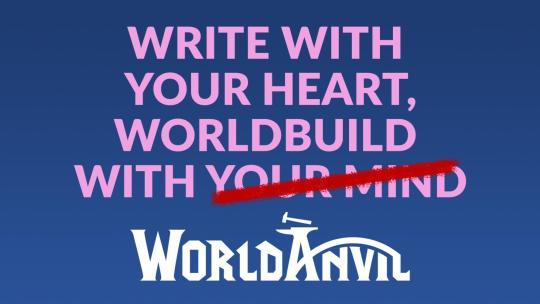
Every year, we’re lucky to have great sponsors for our nonprofit events. World Anvil, a 2020 NaNo sponsor, is a writing software that helps you develop and organize your characters, plot and world setting. Today, World Anvil Director Janet Forbes shares some tips for worldbuilding at all stages of your novel:
As a writing and worldbuilding expert, and the director of the award-winning worldbuilding and novel writing software World Anvil, I get asked this question a lot: at which stage during the novel writing process should you be worldbuilding? Should you be worldbuilding as you plot, as you draft, or as you edit? And—I see you out there, you glorious pantsers—what if you don’t plot? When should you be worldbuilding?
A quick disclaimer & explanation:EVERYONE IS DIFFERENT! (Isn’t it beautiful?) This post is full of suggestions. If in doubt, try things out! But not everything will work for everyone. Experiment with these ideas, and develop a novel writing process that works for you!Some of the best worldbuilding articles are only a few sentences—just long enough to document your ideas! You’ll probably expand them a bit through the drafting process as you discover or decide more details. But don’t feel you have to write the entire “Silmarillion” for your world! Longer articles often just mean more to read through when you’re in a hurry.When to worldbuild as a Plotter?Are you a plotter? Prefer to take a run at a first draft with a solid plan? Then here are some of the best places to work worldbuilding into your novel writing method!
Worldbuild the big stuff during the plotting phase
As a plotter, a lot of the big worldbuilding ideas probably come as you plot your novel. You’ll need characters who live in settlements, and were probably educated in organizations. They may or may not adhere to certain traditions or religions. You might add magic systems, supernatural powers, and/or futuristic technology (which you’ll need to know the limitations of!). Writing down your ideas NOW means that you have them safe, and won’t lose them!
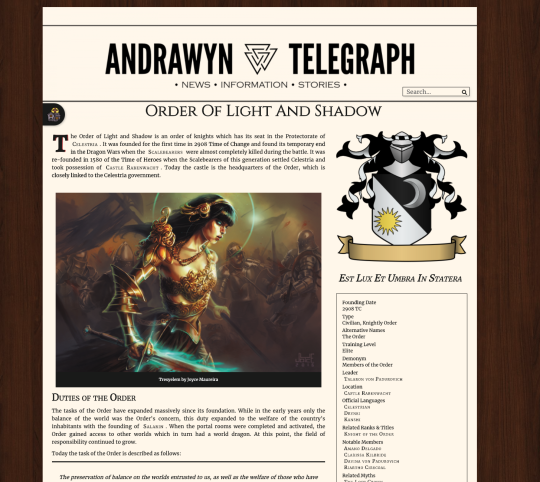
Worldbuilding your organizations, like Nations, Religions, Jedis, Police Forces and Universities, will help give them more impact, and make your world feel more dynamic and real!
Image Credit: Davina, made on World Anvil.
If your novel is an event novel—aliens invade, the Earth quakes, or a zombie virus is let loose—then write a bit about the nature of the threat. If you’re creating a character novel, make sure you have some notes on your main character’s background, mentors, relationships, education and skills.
Worldbuilding these elements of your plot—even in just a few notes—before you start the first draft will really help you down the line! You can plan all of these out using the worldbuilding templates in World Anvil. They give you the freedom to create WHATEVER you want, help you connect everything together, and make everything searchable when you need it!
Worldbuilding during Draft 1—character experience and juicy details!
So, if you’re anything like me, you’ll probably find that something magical happens during your first draft. You start to consider your world through your character’s eyes! This means adding a lot of details to your worldbuilding—both SHOWING rather than TELLING, and sensory detail.
For example, you won’t tell your readers that an organization is evil. Instead, you can show a poor man in the stocks because he couldn’t afford his tithe or tax. Add that punishment to the worldbuilding article about the evil organization, so you can remember it for later (or for book 2!).
Also, as your characters interact with places and people, they’ll feel, smell and hear (and maybe taste) details which heighten the experience. This makes your writing more evocative, and invites readers to feel they’re living in your novel, too!
Add these details—you can even copy-paste relevant paragraphs as quotes—into your worldbuilding articles. Some Plotters prefer to do this scene by scene as they write their first draft. Others (like me!) prefer to do this as a separate stage, once the first draft is done. Read through the first draft, and add quotations or details into your worldbuilding articles. Future-you will thank you!
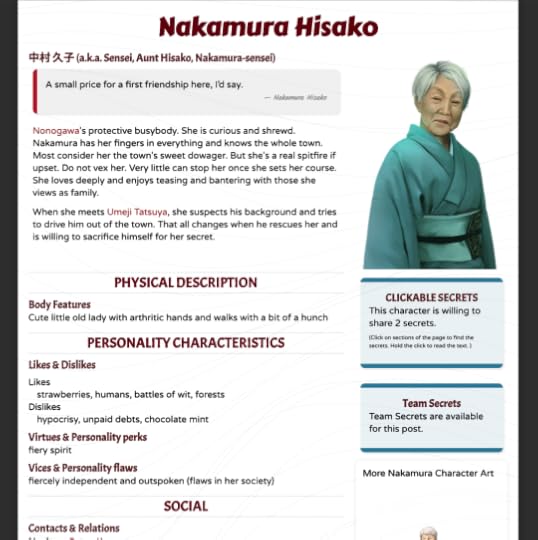
A fantastic example of a quick character profile! Hotlinks (shown here in red) help you link everything together in your world, so you can find things easily!
Image Credit: ShyRedFox, created on World Anvil
Worldbuilding as a Panster!If you’d rather fly by the seat of your pants than plot out each step of your novel, then congratulations—you’re a Panster! You probably love the exciting feeling of discovering your story as you write your first draft. So here are some ways you can work worldbuilding into your novel writing process!
Characters are worldbuilding too!
Most pantsers I know love to craft characters, even if they don’t know what will happen to them over the course of the story! And characters are full to the brim with worldbuilding opportunities!
For example, the places your characters were born, went to school, travelled—they are all important locations to worldbuild in a few sentences. Which country is your character from? Do they fit in and, if not, which traditions or view points do they chafe against? These are all excellent places to start your worldbuilding, even before NaNoWriMo has started. You’ll still be pantsing—just Pantsing with Purpose!
And remember, none of these ideas are set in stone - you can always change them later. It’s just a jumping off point, to give you inspiration.
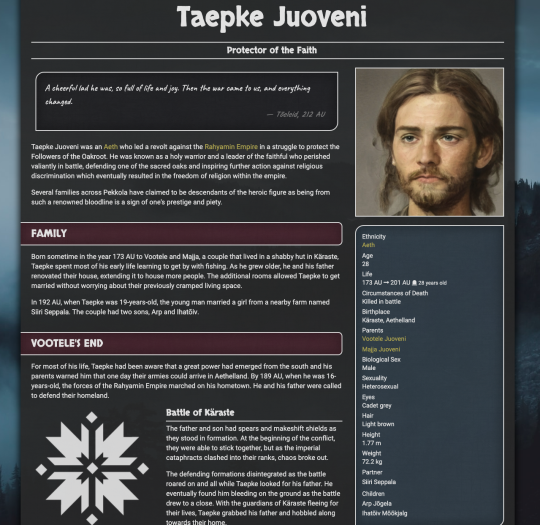
Characters are worldbuilding too! Writing out a detailed character profile is a great way to discover more about your main character. World Anvil provides prompts to help you flesh out your characters even more.
Image Credit: Dhelian, created on World Anvil
Plan worldbuilding using the “Jot, Bin, Pants” method!
The Jot, Bin, Pants method (originally developed by Cassandra Lee Yieng) is a way to plan without plotting! Once you have those scenes, scan through them quickly. You’ll already spot elements you can write short worldbuilding articles about! If a scene takes place in a ship, a smart townhouse, or an abandoned castle, write a few sentences about that space. What material is it built from? What feelings does it conjure up?
Now you have a few notes on that location, you’ll be able to recapture the feeling much more quickly during crunch time, and get your words written!
Keep worldbuilding notes during Draft 1
Another helpful moment to make notes is at the end of each writing session during Draft 1. Try spending 5 minutes documenting the people, places and things you came up with. World Anvil’s tree layout can give you a lot of inspiration when you’re glancing over your setting to decide what should happen next! So if you mention a creature, a character, a location or a technology, scribble down a few notes about your ideas. You never know - it might save your character’s life!
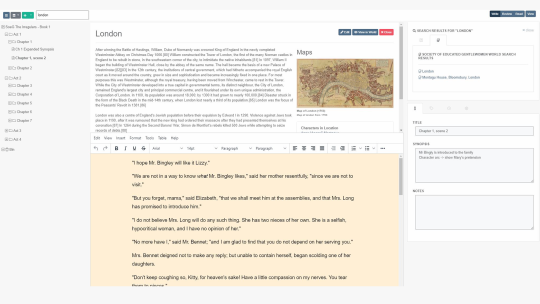
With World Anvil’s novel writing software, you can easily reference your worldbuilding and update your series bible either AS you write, or after each writing session!
The worldbuilding review phaseRegardless of Plotterism or Pantitude, you should eventually have Draft 1 of a book! Granted, it probably needs some tweaks right now. But there’s a story there, characters, ideas, and an ending. Congratulations!
Now is a great time to take stock of your worldbuilding. As you read through your novel, build up your world bible or series bible. Make sure you have articles for each major character, for the places and things you’ve introduced - just a few sentences is fine. But as you edit and flesh out your novel, these will be great references to have, and it’ll speed up the next phase no end!
Worldbuilding and Structural EditsDuring structural edits, i.e. re-editing the actual story and big ideas of your book, you’ll find that keeping an updated version of your series bible is really useful! You can do this as you edit (which is what I prefer) or at the end of each draft.
By the time you’re at line edits, you’ll be done with your worldbuilding… and ready to get on with your novel’s sequel! And I can promise you - you’ll be thanking past-you for keeping such good worldbuilding notes in your Series Bible!
If you want to keep your worldbuilding organized and instantly available in your novel writing software interface, then check out World Anvil! We’re recommended by Writer’s Digest, as well as bestselling authors like Brian McClellan, Chris Fox, Jenna Moreci, and literally a million other writers and worldbuilders! You can also pick up a 25% discount with the coupon code NANOWRIMO!
 Become the ultimate writer and worldbuilder : NaNoWriMo participants get 25% off World Anvil!
Become the ultimate writer and worldbuilder : NaNoWriMo participants get 25% off World Anvil!Whatever you’re writing, and whenever you worldbuild, World Anvil will help to develop and organize your characters, plot and world setting, link everything together, and write your novel in our integrated novel writing software!
And right now you can bag 25% off 6 & 12 month memberships of Master Tier and above, using the coupon code NANOWRIMO on checkout!

Janet Forbes (pen name J.D. Blythe) is a published author and the Director of World Anvil, the ultimate worldbuilding and novel writing platform! This award-winning software helps you organize, store and track your worldbuilding as you’re writing your novel. Our novel writing software, accessible from anywhere, integrates stunningly with your worldbuilding. And when it’s time to publish, you can export, or publish directly on the World Anvil platform and monetize YOUR way! Check it out at World Anvil.
30 Covers, 30 Days 2020: Day 9
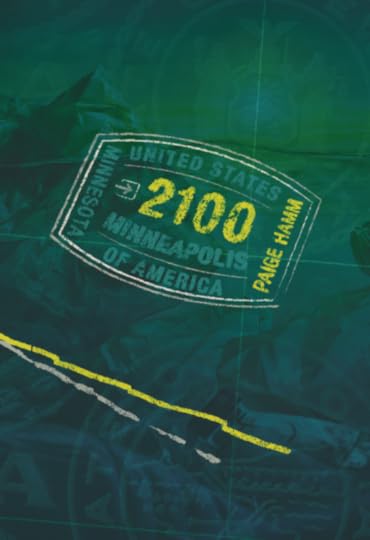
Today’s novel cover is designed by Alberto Rigau and is based on the Sci-Fi novel 2100 by Paige Hamm!
2100Petra Namaskya is among the few remaining citizens left in Norfolk, VA - a region, along with much of the East Coast, better known as the Waste. The year is 2100, and the world lost its chance to make an impact against climate change decades ago.
The Waste is underwater, lacking in reliable food, and with a diminished quality of life for its residents who are forced to use whatever means necessary to survive. When Petra makes a plea for the government to save her city, she’s invited to travel to the U.S.’s new capital in Minneapolis. But the journey there on foot is dangerous, so she hires the help of a mysterious mercenary named Axel.
Together, the two set out across the country…neither knowing they are about to change the course of history.
About The Author
When not musing about the impending doom of the world for her story, Paige is an advocacy writer for a national non-profit and frequent haunt of the local library. An obsessive listener of Queen and political podcasts, Paige enjoys connecting with her German & Polish roots by baking vegan treats for her friends and family. Paige loves few things more than coffee, walks with her partner and their dog Luna, and peppering conversation with random historical facts.
Alberto Rigau is a designer and educator based in Puerto Rico. He currently runs Estudio Interlínea and serves on AIGA’s Design Educators Committee (DEC), collaborating with a select group of educators in crafting research opportunities, conferences, and services for the larger academic discipline. Alberto, a Poynter Institute Visual Journalism Fellow, holds a Masters Degree from NC State University’s College of Design and Undergraduate Degrees in Graphic Design and Anthropology from Syracuse University.
November 8, 2020
30 Covers, 30 Days 2020: Day 8
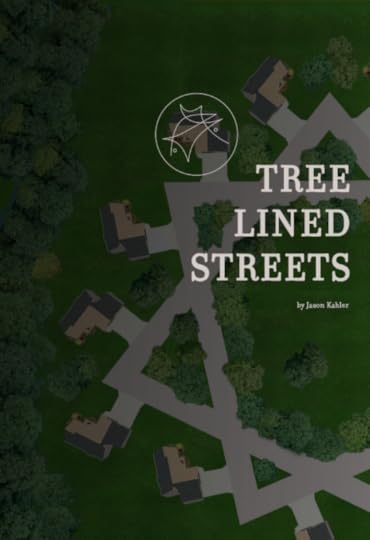
It’s Day 8 and our novel is brought to you by the Horror/Supernatural title Tree Lined Streets by Jason Kahler with our cover designed by Victoria Pickett!
Tree Lined Streets
Looking for a new start after struggling to start a family, a young couple moves into the perfect suburban neighborhood. They soon discover their new homeowner’s association is a cult dedicated to dark magics and old gods. The HOA offers the realization of dreams, if you play along.
Jason Kahler is a freelance writer, scholar, and teacher in the American Midwest. His work has appeared in Analog, Club Plum, and Seneca Review. This is his first novel.
Victoria Pickett is an assistant professor of Graphic Design at Coastal Carolina University. She is originally from Cleveland, Ohio. And recently made the move to South Carolina from Flagstaff, Arizona where she taught at Northern Arizona University for four years. She is an active member of AIGA (the professional association for graphic design).
November 7, 2020
30 Covers, 30 Days 2020: Day 7
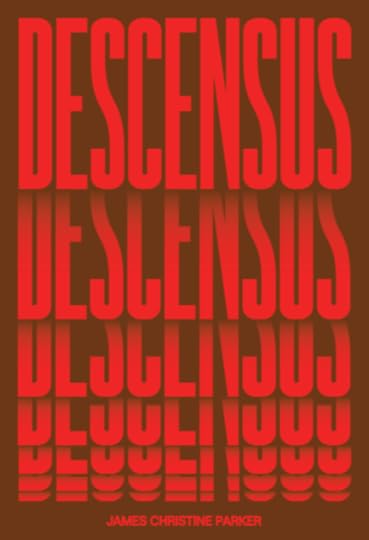
We’re bringing week one of NaNoWriMo to a close with this amazing cover designed by Maddy Angstreich based on the Experimental novel Descensus by
James Christine Parker!
A young man’s spiral into depression and eventual suicide is recounted in a series of multi-level flashbacks, with each one echoing a level of Dante’s Hell.
This character growth/development piece explores suicide from the sufferer’s perspective more so than from the loved ones left behind.
James Christine Parker is an author, a reader, and a photographer. They love tree-climbing, kayaking, canoeing, rafting, archery, and numerous other outdoor adventures. They are a video gamer, comic reader, and movie watcher. James is into being fit, but is not a full gym rat. They have scars and imperfections; but they are fan-freaking-tastic just the way they are.
Maddy Angstreich is a designer, illustrator, and creative coder from the Midwest. After graduating from Washington University in St. Louis with a BFA in Communication Design her practice has been rooted in a love of storytelling and exploration.
November 6, 2020
30 Covers, 30 Days 2020: Day 6
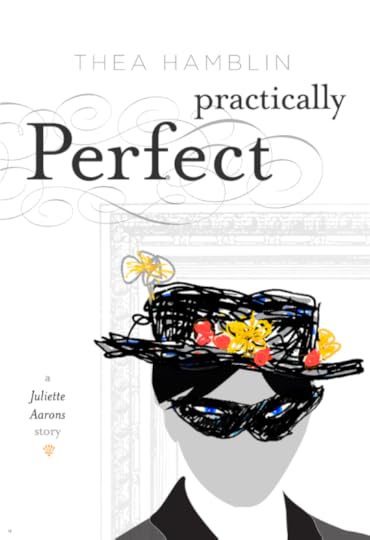
It’s Day 6 folks! Have you been loving the covers so far? This cover was designed by David Hisaya Asari based on the Other/Experimental novel Practically Perfect by Thea Hamblin.
Juliette Aarons, a con woman the public knows as the mysterious Mary Poppins, is eager to redeem her name in the thieving world after a job gone south. In the meantime, though–pressed for money–she’s decided to take on something a bit more mundane: nannying two young children in the dysfunctional home of a wealthy banker, all while hunting for her next heist. Originally, she thought she’d use her connection to the family to case the bank, learn it’s security, and find a way to break in undetected…
Until, that is, another opportunity comes her way: a contract to steal a painting from the home of a private collector. It’s lucrative, though not as much she’d hoped, and at first glance, the details of the job are just not grand enough for a world-class thief. But this wouldn’t be the first time this particular painting has crossed paths with a Mary Poppins…in fact, this heist may be the perfect chance for Juliette to exact some long-overdue revenge.
Thea Hamblin is a sophomore in high school. She lives in Illinois with her family and two cats, and in her free time enjoys writing, rereading her favorite books, studying astrobiology, and playing the violin.
David Hisaya Asari is an Oakland graphic designer and design educator. He is a faculty in Graphic Design, Critical Ethnic Studies, and Special Programs at California College of the Arts. His studio course focuses on information visualization. His Japan study abroad course examines concepts of wabi-sabi and emptiness. David is President Emeritus of the SF chapter of AIGA, the professional association for design; he serves on the board of AIGA DEC (national Design Educators Community). Check him out on Twitter and Instagram @davidasari
Don’t forget, you have until November 15th to submit your own novel for the chance to win a professionally designed cover! Good luck!
November 5, 2020
30 Covers, 30 Days 2020: Day 5
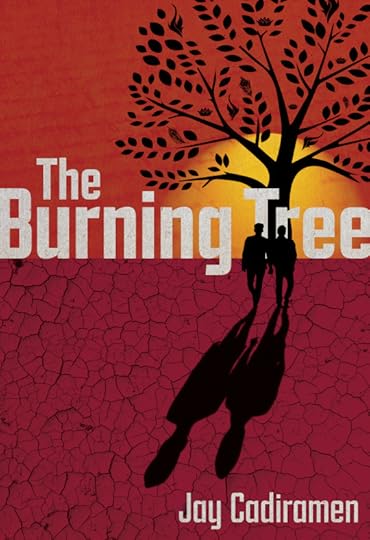
It’s Day 5! Look at this stunning cover designed by Sean Childers Gray based on the LGBT+ novel The Burn Tree by Jay Cadiramen.
The Burn Tree
A story about the ways guilt and grief can shape an entire life, The Burn Tree has its roots in the Sri Lankan Black July Riots of 1983. During this sweltering summer, which would birth a civil war last decades, Sandy shares a kiss with his best friend Gabe that shapes the rest of his life.
Decades later, with the civil war over, Sandy leaves his desperately lonely life in Melbourne to return to Sri Lanka for his father’s funeral. Never comfortable in his own skin, Sandy feels trapped in the dark family home with his mother, who has grown even more aloof and self-centred. He doesn’t understand the language being spoken around him, feels sapped of energy by the heat and humidity, and struggles to think coherently through his own grief. His only comfort is the presence of Gabe, with whom he has been reunited after 35 years.
All his life Sandy has believed the kiss he shared with Gabe was the catalyst for Gabe’s father being murdered by the mob. This guilt, coupled with his grief over the death of his own father, has Sandy questioning everything about his life and wondering if there is a way out of the darkness.
As the Burn Tree stands guard, Sandy has to battle through grief and loss, and confront his own guilt and shame, if he wants to forge a new and better life for himself.
Inspired by a single incident that took place nearly 40 years ago, Jay has been weaving together the strands of ideas for The Burn Tree over the course of about the last 10 years. At last, with the challenge of NaNoWriMo 2020 to inspire him, he is ready to tell this very personal story.
Born in Sri Lanka, Jay has lived and worked all over the world. He and his husband now live in Melbourne, Australia.
Sean Childers-Gray (he/him/his)
Educator | Husband | Father | Advocate | Trans Man - Sean has spent almost two decades working in the field of graphic design and is the Lead Associate Dean at the School of Graphic Arts; Independence University. He earned his MFA in Media Design from Full Sail University. He and his wife spend their free time volunteering for the LGBTQ+ community and he currently serves as the President of the Board of Directors and Marketing Director for Ogden Pride creating festival materials, branding, environmental graphics, and more.
Be sure to check out his Behance Portfolio, read about his MFA journey on Tumblr, or catch him stalking his favorite designers on Twitter @15to1montgomery
November 4, 2020
“For now, your task is to create a first draft. Or in other...
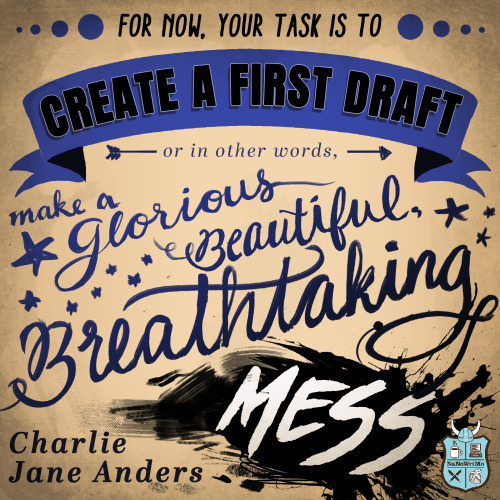
“For now, your task is to create a first draft. Or in other words, to make a glorious, beautiful, breathtaking mess.”
—Charlie Jane Anders’ latest novel is The City in the Middle of the Night. She’s also the author of All the Birds in the Sky, which won the Nebula, Crawford and Locus awards, and Choir Boy, which won a Lambda Literary Award. Her short fiction has appeared in Tor.com, Boston Review, Tin House, Conjunctions, the Magazine of Fantasy and Science Fiction, Wired Magazine, Slate, Asimov’s Science Fiction, Lightspeed, ZYZZYVA, Catamaran Literary Review, McSweeney’s Internet Tendency and tons of anthologies. Her story “Six Months, Three Days” won a Hugo Award, and her story “Don’t Press Charges And I Won’t Sue” won a Theodore Sturgeon Award.Charlie Jane also organizes the monthly Writers With Drinks reading series, and co-hosts the podcast Our Opinions Are Correct with Annalee Newitz.
Read Charlie Jane’s full pep talk here.
Loved Charlie Jane’s pep talk? Let her know!
Image created by Sandra Moore.
Chris Baty's Blog
- Chris Baty's profile
- 63 followers



